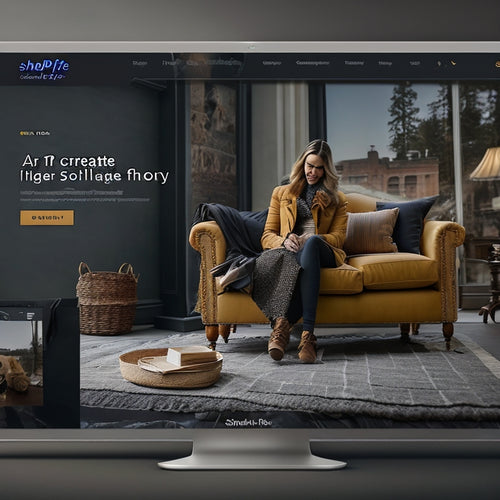
Revolutionize Your Designs With Advanced Printing Methods
Share
Advanced printing technologies have revolutionized the design landscape, offering unprecedented creative freedom and precision. With various techniques available, designers can select the most suitable method for their specific design requirements, from digital and offset printing to screen and flexography. The digital age of printing has sparked a creative evolution, enabling intricate details and vibrant colors with ease. As designers push the boundaries of what's achievable, they can access unparalleled design possibilities, improved efficiency, and remarkably fast production times. By embracing cutting-edge technologies, the possibilities for innovation and creativity become endless.
Key Takeaways
• Advanced printing methods unlock unparalleled design possibilities with precise control over printing processes and intricate details.
• Digital age of printing offers flexibility, precision, and speed, sparking a creative evolution for designers to bring ambitious ideas to life.
• Selecting the right printing method, considering product, design, and quantity requirements, ensures production efficiency and minimizes waste.
• Cutting-edge technologies like screen printing, DTG, and sublimation printing enable designers to create unique, personalized garments and products.
• Embracing advanced printing methods leads to faster production times, reduced costs, and increased productivity, resulting in remarkable design outcomes.
Printing Techniques Explained
What are the key differences between various printing techniques that set them apart, and how do they cater to diverse design requirements?
The evolution of print technology has led to the development of innovative printing processes, each with its unique characteristics.
Digital printing excels in small runs and variable data printing, while offset printing is economical for large quantities with high image quality.
Screen printing is suitable for various surfaces, offering vibrant colors and durability.
Flexography is ideal for packaging materials, providing fast production speed and consistent print quality.
Understanding the strengths of each technique enables designers to select the most appropriate method for their specific design requirements, ensuring best possible results and safety in the printing process.
Digital Age of Printing
The digital age of printing has ushered in a new era of unprecedented flexibility, precision, and speed, revolutionizing the way designers approach their creative projects.
This industry innovation has sparked a creative evolution, empowering designers to push boundaries and explore new possibilities.
Technological advancements have enabled the development of advanced printing methods, allowing for precise control over every aspect of the printing process. This has led to a design transformation, where intricate details and vibrant colors can be achieved with ease.
The digital age of printing has opened up new avenues for designers, enabling them to bring their most ambitious ideas to life with unprecedented accuracy and efficiency.
The Art of Garment Printing
With the advent of advanced printing technologies, garment printing has evolved into a sophisticated art form that enables designers to transform their creative visions into wearable masterpieces. This art form has revolutionized the textile industry, offering creative solutions for garment customization. Innovative techniques such as screen printing, direct-to-garment printing, and sublimation printing have made it possible to produce high-quality, customized garments with ease.
| Printing Technique | Description | Ideal For |
|---|---|---|
| Screen Printing | Pulling ink over a screen to create a design | Bulk orders, simple designs |
| Direct-to-Garment (DTG) | Prints detailed designs with multiple colors | Small batches, customizable designs |
| Sublimation Printing | Transfers prints onto polyester or polymer-coated substrates | Polyester or polymer-coated substrates, all-over printing |
These techniques have opened up new possibilities for designers, enabling them to create unique, personalized garments that stand out in the market.
Choosing the Right Method
In selecting the best printing technique, designers must carefully consider the product, design, and quantity requirements to guarantee a precise match between the chosen method and the desired outcome. This secures design selection aligns with production efficiency, minimizing waste and maximizing output.
Cost considerations also play a pivotal role, as certain techniques are more economical for large or small runs. Design complexity is another key factor, with some methods better suited for intricate designs or specific materials.
Benefits of Advanced Printing
Advanced printing technologies unlock unparalleled design possibilities, allowing creators to push boundaries and produce visually stunning, high-quality prints that captivate audiences. By leveraging advanced printing methods, designers can reap numerous benefits that elevate their work.
One significant advantage is improved efficiency, which enables faster production times and reduced costs. This, in turn, allows for increased productivity and quicker time-to-market. Moreover, advanced printing technologies foster enhanced creativity, as they offer a wide range of materials, finishes, and special effects.
This creative freedom enables designers to experiment with new ideas and bring innovative concepts to life. With advanced printing, the possibilities are endless, and the results are truly remarkable. By embracing these cutting-edge technologies, designers can revolutionize their designs and take their work to new heights.
Frequently Asked Questions
Can I Use Digital Printing for Large-Scale Commercial Projects?
While digital printing excels in small runs, for large-scale commercial projects, consider offset printing as a cost-effective option. Alternatively, screen printing offers versatile applications, but may not be the most suitable choice for high-volume production.
How Do I Ensure Color Consistency Across Different Printing Methods?
To maintain color consistency across different printing methods, implement color management strategies, considering digital vs offset printing's distinct color profiles, and guarantee ink compatibility between screen printing and dye sublimation to achieve accurate color reproduction.
Are Eco-Friendly Inks Available for All Printing Techniques?
Did you know that 75% of consumers prioritize eco-friendly products? When it comes to sustainable inks, not all printing techniques are created equal. While flexography uses environmentally friendly water-based inks, digital and offset printing also offer eco-friendly options, but screen printing and gravure printing lag behind in sustainable ink adoption.
Can I Use Flexography for Printing on Non-Packaging Materials?
Flexography is primarily suited for packaging materials, but not ideal for printing on non-packaging materials like textiles, where digital printing or screen printing may be more suitable, whereas digital printing can be used on metal substrates.
Do Sublimation Prints Work Well on Cotton or Natural Fibers?
Sublimation printing is not suitable for cotton or natural fibers as it requires polyester or polymer-coated substrates for best results, compromising color vibrancy and print durability on these materials.
Related Posts
-
Combining Shoppable Videos With Product Description Generator App
Combining shoppable videos with a product description generator app has become a powerful tool in the world of e-com...
-

Social Proof Shopify Apps Help Build Trust Among Customers by Displaying Real Reviews and Actions
This article explores the benefits of using social proof Shopify apps to build trust among customers. By displaying ...
-

How Do I Add a Product Feed to Shopify
The integration of product feeds into Shopify offers numerous advantages for merchants seeking to enhance their onli...

